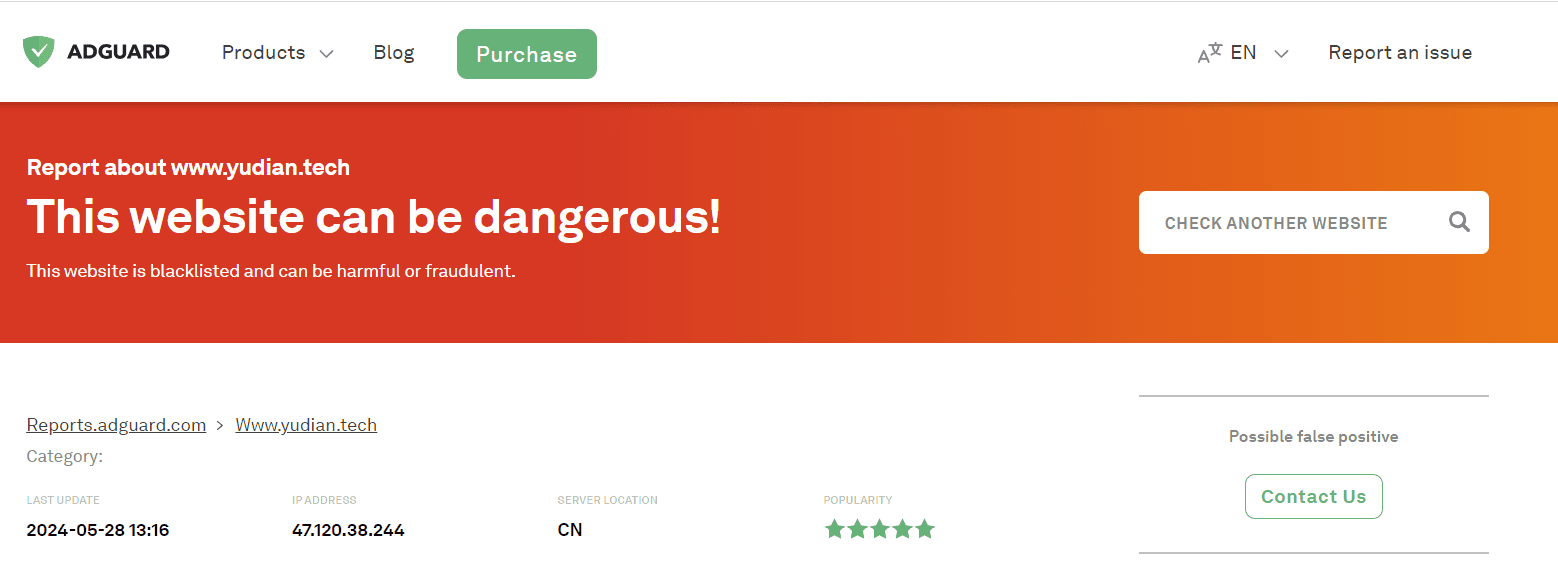Phishing and malware protection
Falling prey to phishing and malware remains a common issue. To enhance digital security, we’ve incorporated special filters in AdGuard products to shield you from malicious and phishing websites. To date, we’ve categorized over 15 million sites and built a database of 1.5 million websites known for phishing and malware. Using this database, AdGuard checks the websites you visit to protect you from online threats.
We strictly do not collect or use any information about the websites you visit.
How does AdGuard check websites?
Each time you visit a website, your local client exchanges information with our backend server in the form of hashes and hash prefixes. Based on this exchange, the local client determines whether or not the website is listed in the potentially dangerous websites database. There is a difference in the scope of this check for apps and extensions.
In apps
AdGuard provides the best possible protection by inspecting both the pages and all objects loaded on them. AdGuard checks URLs and domain names using hash prefixes, not the full URLs, so our servers retain no information about the websites you visit and your personal information is completely safe. Our servers respond to the app’s query with a list of all possible addresses that match the hash prefix. When a potential threat is detected based on hash matches, access to that website is immediately blocked.
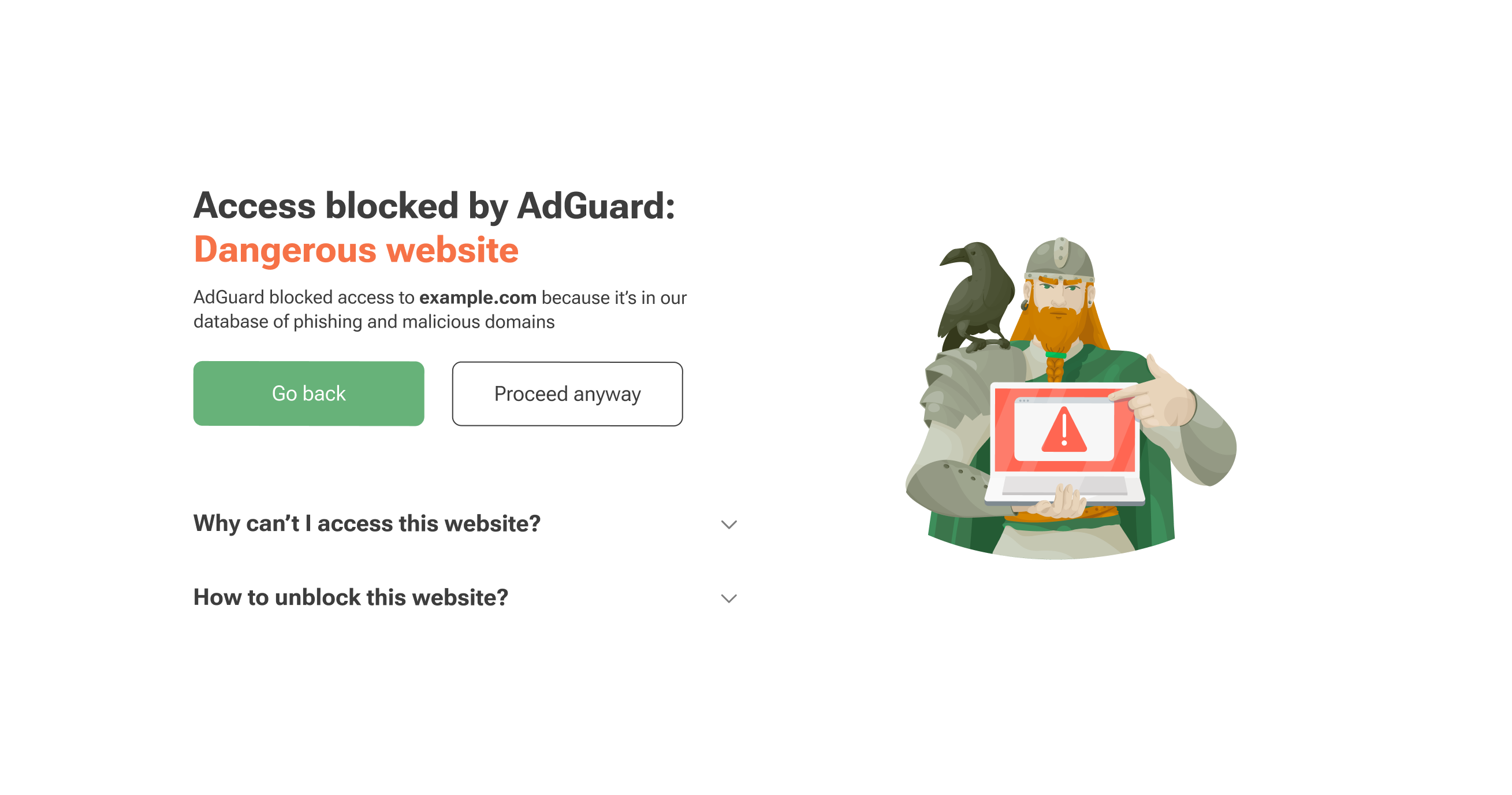
In browser extensions
Our browser extensions can only check domain names, not full URLs. They are also unable to check subqueries. This means that if there are potentially malicious elements on the page, they will be loaded even if the page itself is from a safe domain. The extension won’t be able to protect against them. It's also important to note that the check performed is asynchronous, i.e. it happens at the same time as the page is loaded, so it’s possible that malware could be loaded as well.
Setting up phishing and malware protection in AdGuard products
For Windows: Activate the Browsing Security module in the Settings menu

For Mac: Enable the Security module in Preferences
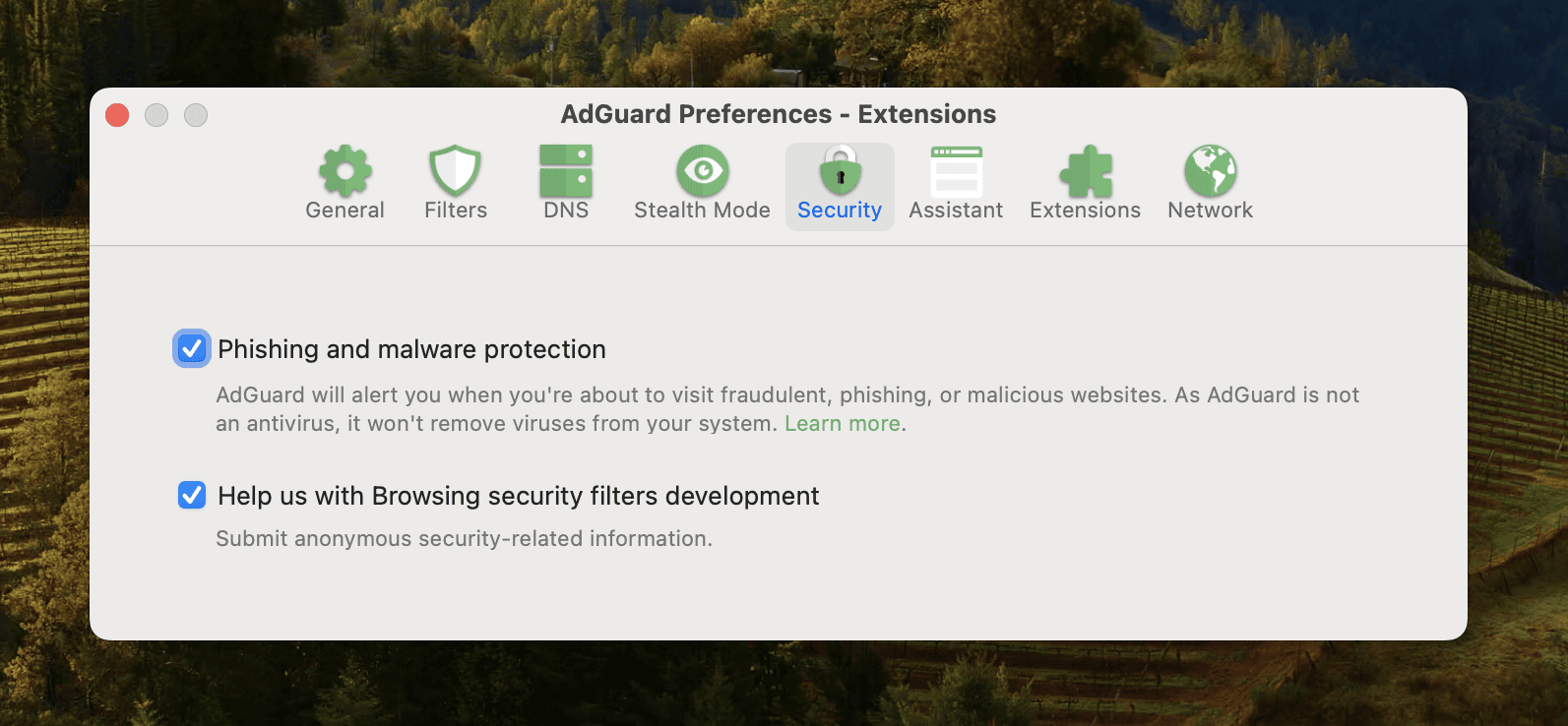
For Android: Turn on Browsing Security in the Protection tab
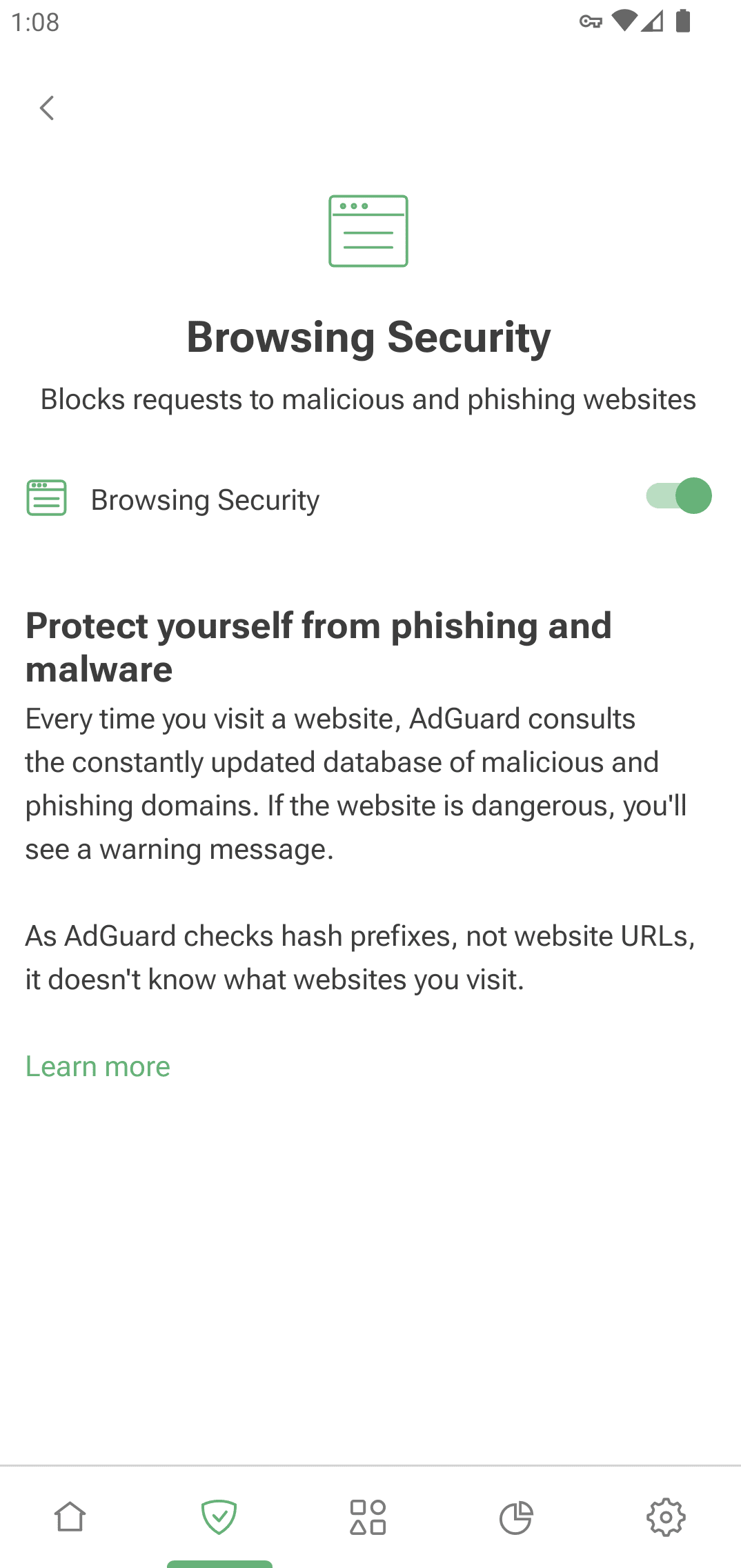
For iOS: Although there’s no separate module, you can go to Safari protection → Filters → Security and enable the available filters. Additionally, enable DNS protection and select one of the AdGuard DNS servers
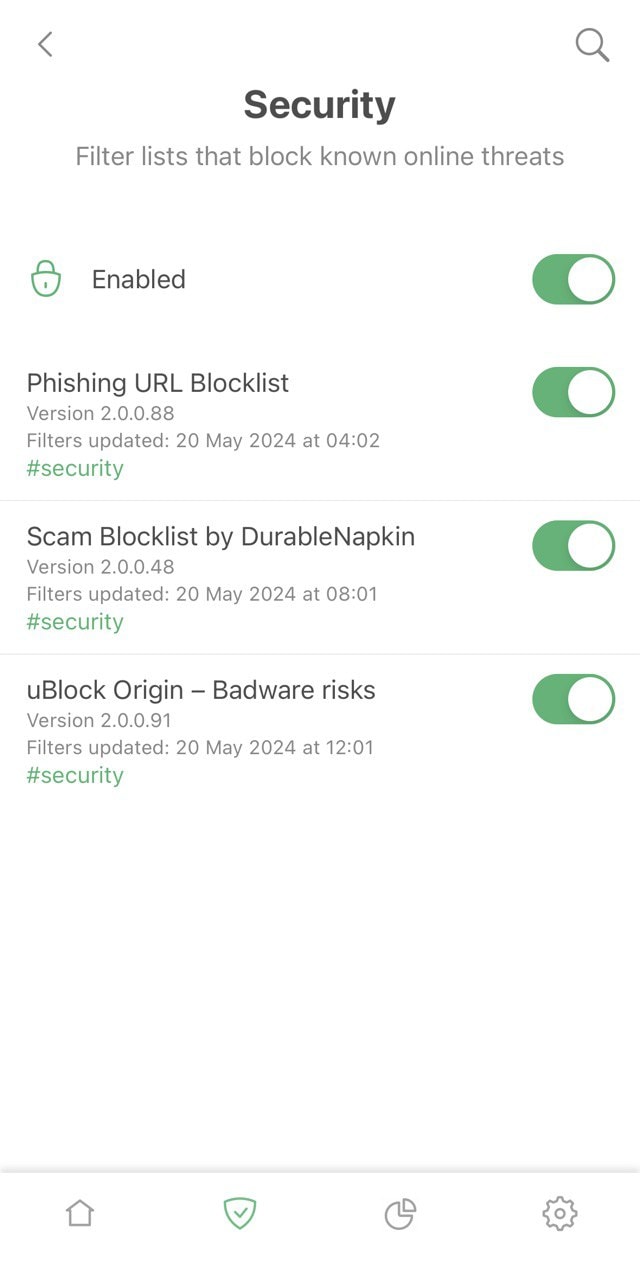
For Browser extensions: Enable Phishing and malware protection in the Settings tab. For enhanced protection, go to Filters → Security and activate filters
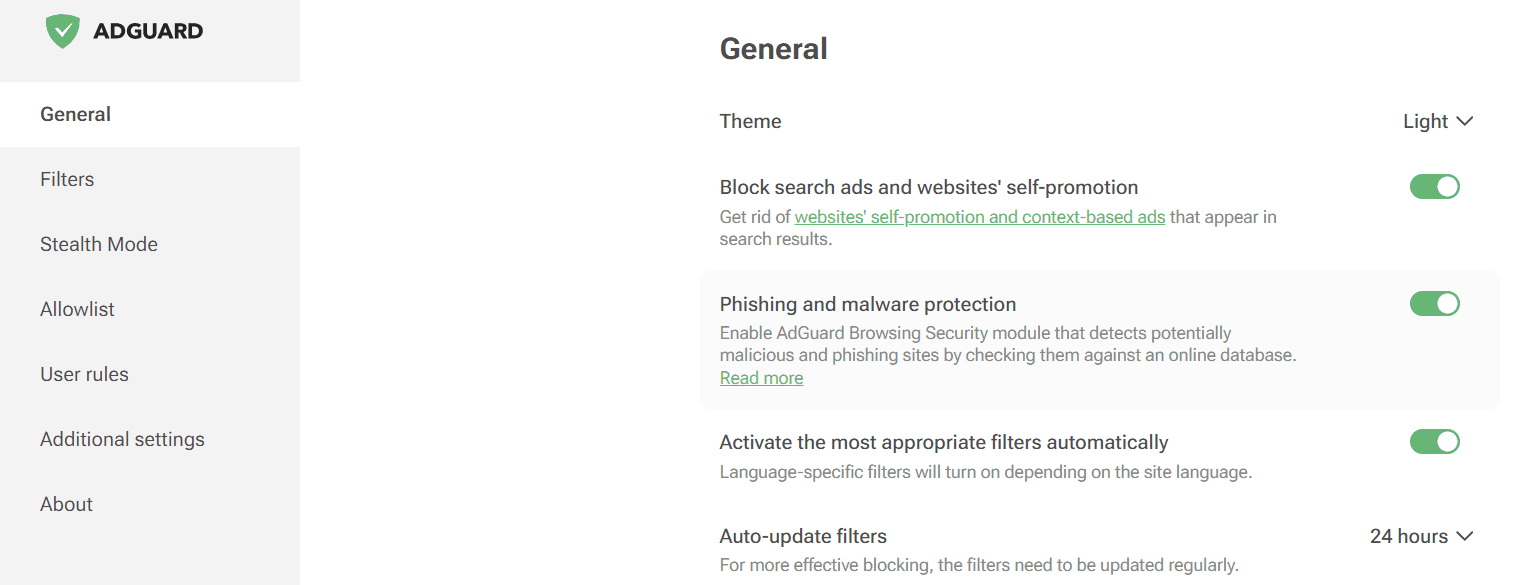
For Private AdGuard DNS: Enable malware protection in Server settings under Security
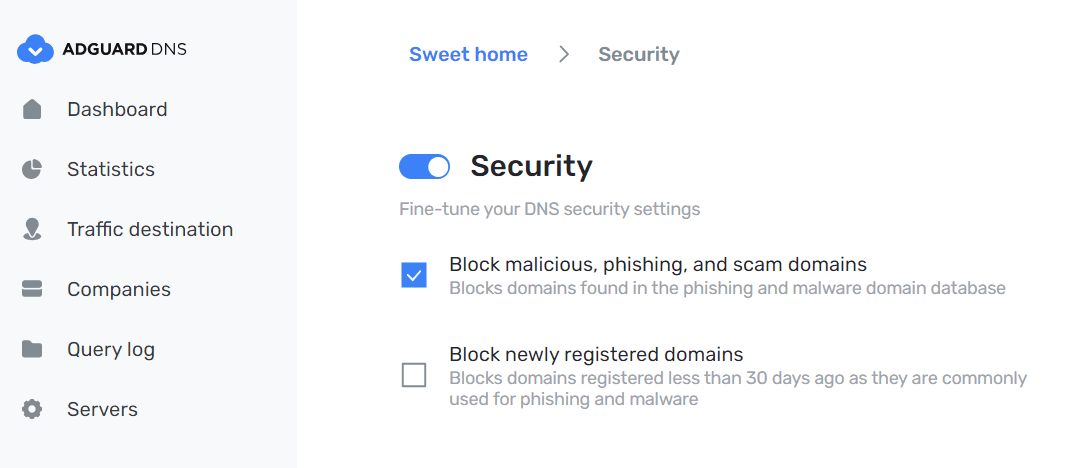
What we block
We maintain two primary filters: one that protects against phishing and fraudulent websites that attempt to steal user credentials, and another that blocks access to websites known to distribute malware, which could lead to data loss, information leaks, or damage to your device. These filters also protect you from websites with various scams and fraudulent schemes. For more detailed information, refer to this Wikipedia article.
Maintaining our filters
AdGuard maintains an extensive database of phishing and malware websites, and it’s updated regularly and automatically as new threats are discovered. We collect information from a variety of reliable, high-quality sources, both public and from other companies, and aggregate it into a common database of dangerous sites.
We automatically analyze complaints about suspicious sites and spend a great deal of time keeping the database up-to-date, cleaning up false positives, and implementing mechanisms to prevent them in the future.
Want to help?
Any help is welcome! If you encounter a phishing or malware website, please report it to support@adguard.com.
False-positive responses
Occasionally, some non-malicious websites are added to AdGuard’s filters. We do our best to reduce the percentage of false positives, but they still occur. If you encounter this behavior from AdGuard, please report the false positive to our technical support at support@adguard.com.
If you are suspicious about a website
If you suspect that a certain website might be dangerous, check it first by using our security check tool.
